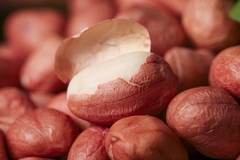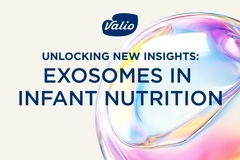Beneo Institute reveals synbiotic power of inulin and HMOs for toddler nutrition
Combining chicory-derived inulin-type fructans with the human milk oligosaccharide (HMO) 2’-fucosyllactose (2’-FL) has synergistic effects on toddler gut microbiota, according to preclinical research. The authors underscore that the combination can support a healthy gut microbiome more effectively than the two ingredients individually.
The Beneo Institute says this is “one of the first studies” to test this combination. The organization says it strengthens the argument for using prebiotic blends in infant milk formula to support early-life gut health, with potential long-term benefits for digestive and immune function.
In the study, inulin-type fructans induced metabolic and compositional changes in the toddlers’ gut microbiota, but 2’-FL alone had less prominent effects. Combining the two ingredients led to additive or synergistic effects and enhanced the production of the beneficial metabolite butyrate, a key fuel for gut cells.
“These new insights underline the power of combining prebiotics from chicory root with the HMO, 2’-FL, to more closely replicate the natural gut-supporting effects of breast milk — a promising direction for smart solutions in toddler nutrition,” says co-author Stephan Theis, head of Nutrition Science and Communication at Beneo.
The Beneo Institute combines Beneo’s expertise from Nutrition Science and Regulatory teams, acting as an advisory body for customers and partners.

Gut fermentation insights
The in vitro fermentation study was conducted with the Institute of Food, Nutrition, and Health at ETH Zürich, Switzerland. Its abstract was first published during the 57th Annual Meeting of the European Society for Paediatric Gastroenterology, Hepatology, and Nutrition in Finland.
The research focused on the microbial composition and metabolic changes of two toddler stool samples. Treatments included 2’-FL alone, fructans alone, and combinations of 2’-FL and fructan. The team used high-performance liquid chromatography to quantify concentrations of short-chain fatty acids.
For their analysis, the researchers used the PolyFermS long-term continuous fermentation model. This technology preserves the individual microbial community and biodiversity of each donor. In addition, it mimics the dynamics of the large intestine, allowing donor-specific and reproducible insights into gut fermentation.
 The research analyzed the microbial composition and metabolic changes of stool samples, using high-performance liquid chromatography.The blend’s ability to stimulate the beneficial metabolite butyrate correlated with a specific boost of beneficial bacteria, including Faecalibacterium and other members of the Lachnospiraceae family.
The research analyzed the microbial composition and metabolic changes of stool samples, using high-performance liquid chromatography.The blend’s ability to stimulate the beneficial metabolite butyrate correlated with a specific boost of beneficial bacteria, including Faecalibacterium and other members of the Lachnospiraceae family.
The researchers also found specific alterations in the bifidobacterial community as the novel prebiotic combination enhanced a bifidogenic effect. Observed changes depended on the initial microbiota. In one donor, Bifidobacterium breve, B. pseudocatenulatum, and B. catenulatum increased, and B. longum and B. pseudocatenulatum in the other.
They add that these variations highlight individual differences and a potential for personalized nutrition approaches.
Prebiotic and HMO advances
The Beneo Institute notes that the findings support the role of science-backed prebiotic blends in complementing early-life nutrition, especially for toddlers transitioning from breastfeeding.
The organization underscores that chicory root prebiotics are among the “very few proven prebiotics,” according to the International Scientific Association for Probiotics and Prebiotics. Moreover, they are the only plant-based options.
After a strategic global partnership with Wacker, Beneo offers 2’-FL globally, which it says is “the most abundant and extensively studied HMO.”
Earlier this year, we explored how HMOs reshape infant nutrition and bridge the gap between breast milk and formula. Innova Market Insights data indicates a 12% CAGR between October 2019 and September 2024 in baby and toddler food launches with HMO ingredients.
















